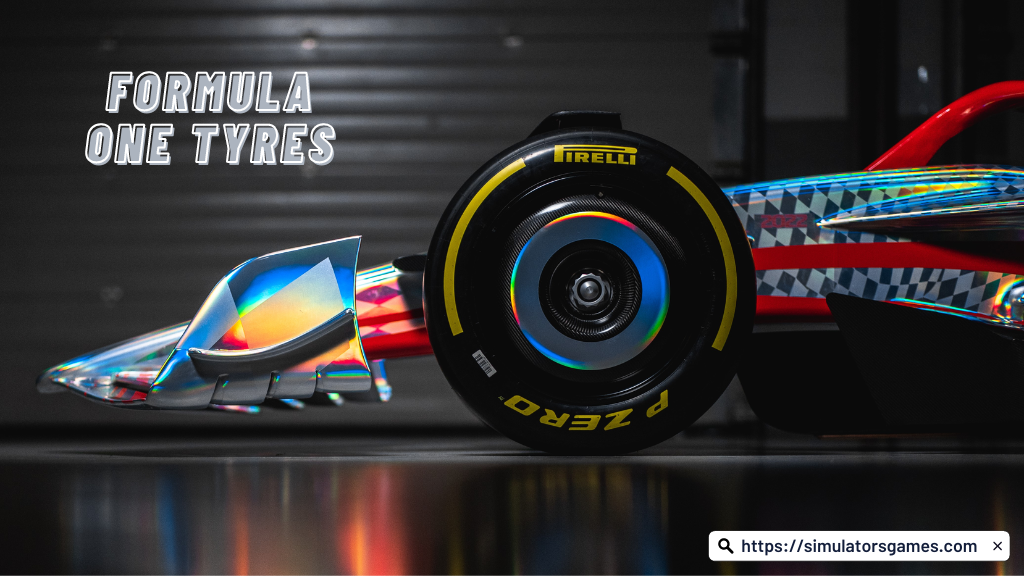Formula One tyres hold a key position in determining the success of a Formula One car on the track. The history of the sport has seen multiple shifts in the type and brand of tyres used. All with unique characteristics and impacts on car performance.
Design
It’s easy to think that Formula One tyres and regular road tyres are the same, but the reality couldn’t be further from the truth. Unlike road tyres that can last up to 80,000 km (50,000 miles). F1 tyres are built to endure only one race distance.
Furthermore, the type of rubber compound used in F1 tyres varies depending on their intended purpose. In extremely wet conditions like those seen in the 2007 European Grand Prix. F1 cars may struggle to keep up with the safety car due to the risk of aquaplaning.
In races with an excessive amount of water like the 2011 Canadian Grand Prix. The tyres cannot provide enough safety, leading to races being red-flagged until it’s safe to resume. The 2021 Belgian Grand Prix saw the same scenarios.
Grand Prix Controversy
The 2005 United States Grand Prix will forever be remembered for the controversy it stirred up. The trouble began during the practice session when Ralf Schumacher, driving for Toyota, crashed in Turn 13 of the Indianapolis Motor Speedway road course.
The left-rear tyre had failed, causing Schumacher to lose control of the car and crash. This turn is unique to Formula One racing, being a high-speed banked turn that puts immense pressure on the tyres. As a result, the side walls of the tyres can wear abnormally and bow.
The following day, Michelin issued a report stating that the tyres it had provided for its seven customer teams were not safe for extended high-speed use on Turn 13. The company announced its intention to fly in another set of tyres from its headquarters in Clermont-Ferrand.
However, when the replacement tyres arrived, they too were found to have the same issue during testing. Michelin representatives Pierre Dupasquier and Nick Shorrock wrote a letter to FIA Race Director Charlie Whiting stating that unless the cars could be slowed down in Turn 13. Michelin’s tyres would be unsafe for the race.
Whiting replied that Michelin should have brought a second set of tyres and proposed a solution for the maximum safe speed in Turn 13.
He also rejected the idea of a chicane being placed in the turn, as it would make the race a non-championship one. In a second letter, Dupasquier and Shorrock refused to allow their teams to race on Michelin’s tyres.
As a result, the race took place with only three Bridgestone teams taking part, with Michael Schumacher winning the race.
Tyre Performance
Formula One fans are always fascinated by the tyres used in the sport. As they can make a big difference in performance and strategy. In the 2023 season, Pirelli will offer eight compounds to choose from, ranging from the hardest and least grippy C0 to the softest and most fragile C5.

The three compounds nominated for each race will have distinct sidewall colors: white for the hard, yellow for the medium, and red for the soft. The harder compound is supposed to last longer, while the softer one is supposed to provide more speed.
However, there is a catch: drivers have to use at least two dry weather compounds during a race. Which means that they need to balance grip and durability to maximize their potential.
Moreover, if the weather turns wet, they have to switch to either the green-walled intermediate or the blue-walled full wet. Which are designed to handle different levels of standing water on the track.
One notable change for 2023 is the insertion of a new compound between the old C1 and C2. Which should offer more options for strategic diversity.
This change was prompted by complaints from some teams about the big gap in performance between the C1 and the other compounds. Another change that might affect the teams’ tactics is the trial of a reduction in allocated tyre sets from 13 to 11 at two races. Aimed at making tyre usage more sustainable.
This means that teams will have fewer chances to try out different compounds and will have to manage their resources more carefully.
However, one aspect of tyre usage that remains uncertain is the role of qualifying. While teams can usually choose any compound for qualifying. There will be a mandatory pattern in the two races with fewer sets: hard in Q1, medium in Q2, and soft in Q3.
This assumes that the weather will be dry. Which is not always the case, as seen in many unpredictable qualifying sessions. Therefore, even with all the data and experience available, tyre strategy in Formula One remains a challenging and fascinating puzzle. Where both human and technological skills come into play.
Conclusion
In conclusion, Formula One tyres are crucial to a car’s success on the track. With different compounds and variations depending on the weather conditions.
The 2023 season brings new compounds and changes to the number of allocated tyre sets, challenging teams to balance grip, durability, and sustainability. Tyre strategy remains a fascinating puzzle, requiring a combination of human and technological skills to master.
Also Read: Logitech G920 Vs G923 – Which Racing Wheel is Better?






